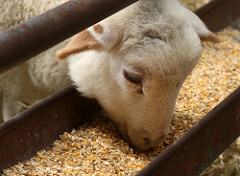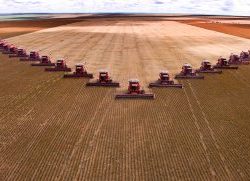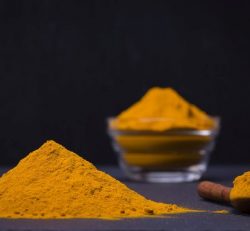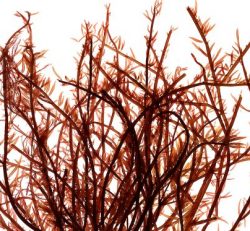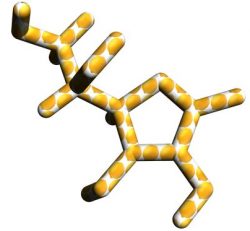SUNFLOWER MEAL AND PEAS: PERFECT FOR SHEEP FEED
Which soy alternatives can be fed to small ruminants like sheep? Sunflower meal and peas seem to be good choices, and treatment (protection) can result in lower protein needed for the same performance.
Protein is an essential component of animal feed that the industry cannot do without. Soybean meal is used a lot and serves as a great protein source for animal diets. However, the use of (primarily) South American soy is questioned because of environmental reasons, despite efforts to make all the soy sustainable. This is why nutritionists are looking for other protein sources to feed to livestock animals.
Sunflower meal: complements the AA profile
Sunflower (Helianthus annus) meal is widely used in the European Union, which was the main meal importer and the second largest producer in 2012/13 (USDA–FASS, 2014). Sunflower meal is a co-product of sunflower oil extraction; with variable content of crude protein (31-37% of dry matter; DM) depending upon the extent of de-hulling of the seed. Its protein is highly degradable in the rumen, normally above 80%. Since sunflower meal protein is characterised by a relative lysine deficiency and a high content in sulphur amino acids and tryptophan, it complements well the amino acid profile of leguminous seeds.

The study, published in the Small Ruminant Research magazine, examined the effects of treating sunflower meal and pea meals with orthophosphoric acid on growth performance, concentrate intake, and carcass yield and fatness of growing-fattening lambs. Photo: Henk Riswick
Peas: suitable for growing in Europe
The crop of leguminous seeds such as peas (Pisum sativum) is best suited for the European climate. Due to their high protein content, the European Union has promoted the production of peas although its proteins have the limitation of being also highly degradable in the rumen. Peas contain approximately 24% protein with more than 84% of it degradable in the rumen. The requirement for metabolisable protein of rapidly growing animals must be met by a combination of microbial protein synthesised in the rumen and by intestinal digestible dietary by-pass protein. Sunflower meal and peas can be used as protein supplements for ruminants although present as a main limitation their high rumen degradability. Heat treatment of meals may increase their rumen undegradable protein (RUP) content. Many experiments have demonstrated the beneficial effects of the technological processes of feeds, in reducing the degradation of protein in the rumen without decreasing digestibility in the small intestine.
Technical articles on new proteins can be found in the All About Feed dossier. Find out more.
Protein studies in lambs
According to feed tables from the The Institut National de la Recherche Agronomique, heating undecorticated sunflower and peas meals increases rumen undegradable protein (RUP) content 191 and 200%, respectively. In this sense, a study was conducted and showed reduced protein effective degradability values of sunflower meal from 80.1% to 69.1% treating with orthophosphoric acid plus heat. Similarly, the reductions for spring pea were from 88.1% to 75.3% protein. These protected meals were fed lo lambs in a production trial performed at the Polytechnic University of Madrid. The study, published in the Small Ruminant Research magazine, examined the effects of treating sunflower meal and pea meals with orthophosphoric acid on growth performance, concentrate intake, and carcass yield and fatness of growing-fattening lambs.
72 “Entrefino” cross male lambs from 3 commercial farms with an average initial body weights (BW) of 14.4kg were randomly assigned to 4 diets with different protein levels, and fattened to an average slaughter weight of 25kg. The experimental diets consisted of wheat straw as the only roughage source and 1 of 4 concentrate supplements. Concentrates were formulated to be isoenergetic and were designed to meet INRA’s (2007) nutrient recommendation for male growing-fattening lambs with moderate growth potential. Protein sources in the control concentrate (18% protein in DM basis) were soybean meal and untreated sunflower meal and pea meals. In 3 of the experimental concentrates, orthophosphoric acid-treated meals substituted untreated sunflower meal and pea meals (18% protein), and soybean meal was partially (16.7% protein) or totally removed (15.6% protein). The length of the experiment was variable depending on the lamb’s initial BW. Lambs with higher initial BW were slaughtered at a commercial plant at day 37, whereas lambs with lower initial BW were slaughtered at day 58. No effect associated with the protein content in the concentrates was observed in production performance.
Technical articles on new proteins can be found in the All About Feed dossier. Find out more.
Same performance with less protein
Concentrate intake (779g/day), average daily grain (234g/day), feed conversion ratio (3.42kg concentrate intake/kg body gain), hot and cold carcass yield (46.7 and 45.4%, respectively), and carcass fatness of lambs were similar among treatments. The carcasses of the lambs were classified as light carcasses (under 13kg) with scarce dorsal-fat (2.17; ranged from 1 to 5 according to the Council Regulation No 1278/94), and normal amount of kidney-pelvic-fat (2.31; scale 1 to 5 following Colomer-Rocher et al., 1988).
The similar values of growth performance among concentrates in spite of the progressive reduction in protein level suggests that with protected proteins it is possible to feed concentrates with 15.6% protein (DM basis) reducing the quantity of vegetable protein meals to include in the concentrate as well as the quality of the protein concentrates. This protein level will be equivalent to 14.4% in these diets assuming a straw consumption about 10% of the total intake. In growing lambs (BW=20kg) fed to maximise growth, the National Research Council (2007) reduces 8.4% the daily protein requirements (expressed as g of protein) when the proportion of RUP in the diet increases from 20 to 40%. Present results concur with data published previously by Kentucky Agricultural Experiment Station’s researchers who heated soybean meal and improved gains of lambs fed a 12% protein diet to a point where they were comparable to those obtained on a 17% protein diet.
Conclusion: complete replacement possible
In conclusion, the results of this experiment demonstrate that treated spring pea and non-decorticated sunflower meals could completely replace soybean meal in concentrates of growing-fattening lambs with moderate growth potential and that the protein content in the concentrate could be decreased to 15.6% without affecting intake and lamb performance.
Fernando Diaz
Source: www.allaboutfeed.net


